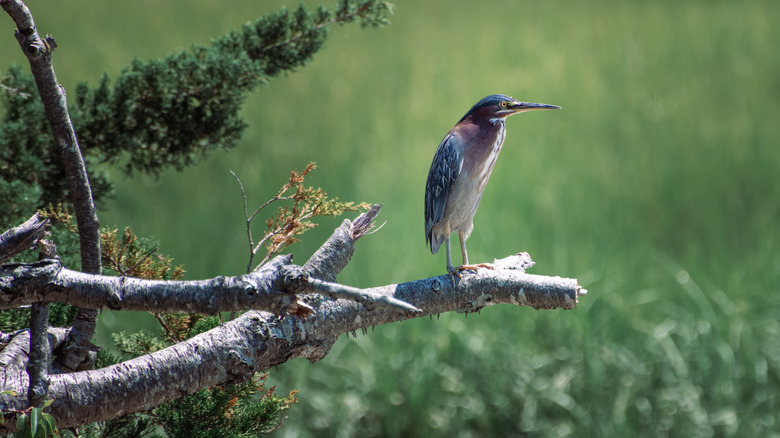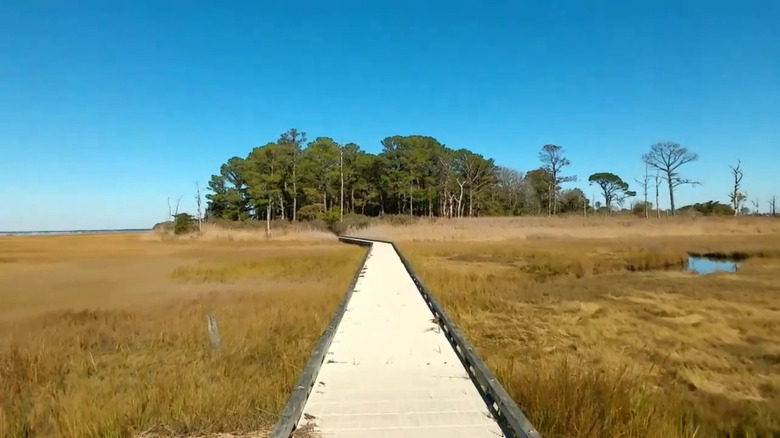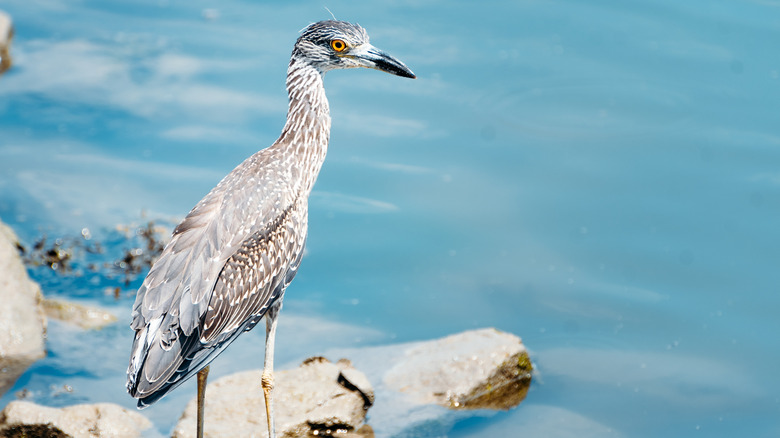Delaware's Under-The-Radar Island Brimming With Unique Birds Is An Uncrowded Beachy Paradise
Delaware may be best known for its charming small towns and tax-free shopping, but it also surprises visitors with its natural beauty. From the free Lavender Fields at Warrington Manor to Fenwick Island, where there's a shipwreck museum of ocean wonders, the state offers plenty of hidden gems. But one of its most intriguing destinations remains largely off the radar: Burton Island. Unlike Delaware's bustling beach towns, this tiny island has no permanent human residents — only an ever-changing roster of feathered visitors soaring over its inlets.
Burton Island has a history as rich as its ecosystem. Once home to farmers and later a retreat for wealthy city dwellers, it has since been returned to nature. Today, it's a protected preserve, with a scenic hiking trail looping through coastal landscapes teeming with birds. The short channel crossing to reach the island offers breathtaking views, with herons and ospreys watching from the shallows. But if you're planning a visit, timing is everything. While the scenery is stunning year-round, there's one reason savvy travelers prefer cooler months over summer.
From Gilded Age getaway to quiet coastal retreat
Burton Island lies just south of Rehoboth Beach, home to one of America's best boardwalks, and within the Indian River Bay. The easiest way to reach the Burton Island Trailhead is by flying into Salisbury-Ocean City Wicomico Regional Airport, and then making the hour-long drive to Delaware Seashore State Park. From there, a scenic footbridge commences the island's 1.5-mile loop trail. In the 1700s, Burton Island was a farmland outpost, but by the late 1800s, a New York developer transformed it into a private escape for city elites. A hotel and clubhouses once stood on the island, offering a peaceful retreat from urban life. However, by the 1930s, interest faded, and the island was left to the elements.
Delaware later acquired the land, officially designating it a nature preserve in 2004. The Burton Island Trail was built to allow visitors to explore its landscapes without disturbing its delicate ecosystem. Today, the boardwalk path winds past salt marshes and quiet inlets, with frequent glimpses of wading birds and darting crabs. From March through November, out-of-state visitors pay a $10 entry fee per vehicle — but think twice before visiting in the summer. "Beautiful, but avoid in summer months!" one Tripadvisor reviewer cautions. The reason? An onslaught of insects, especially ticks. To avoid them, opt for a visit during colder months instead, or wear long clothing and use lots of bug spray.
Burton Island's birds and other wildlife
Burton Island's rich biodiversity is what makes it such a fascinating place to explore. Because it's a protected nature preserve, visitors are encouraged to stay on the trail to avoid disturbing fragile habitats, particularly the nesting grounds of diamondback terrapins. The island's diverse ecosystems include sandy beaches, salt marshes, and upland maritime forests, each playing a crucial role in sustaining local wildlife. Crabs are among the island's most essential inhabitants, including horseshoe crabs and Atlantic blue crabs, which you can see scuttling along the shorelines.
For bird enthusiasts, the preserve provides a safe haven for an impressive variety of species, including ospreys, snowy egrets, laughing gulls, and black-crowned night herons. During spring and fall migrations, songbirds can be spotted flitting through the trees, adding flashes of color to the landscape. According to Cornell's eBird initiative, over 240 bird species have been recorded on the island. Though you may be alone on your nature escape, with so many birds calling the island home, you'll always have plenty of company. Whether you're hiking or birdwatching, it's wise to check ahead for hunting season, as Burton Island occasionally closes during these times, with Sundays being the only open day for visitors. After exploring the island, stop at the nearby Indian River Life Saving Station Museum in Rehoboth Beach to learn about Delaware's maritime history and the rescues performed along its coast.


